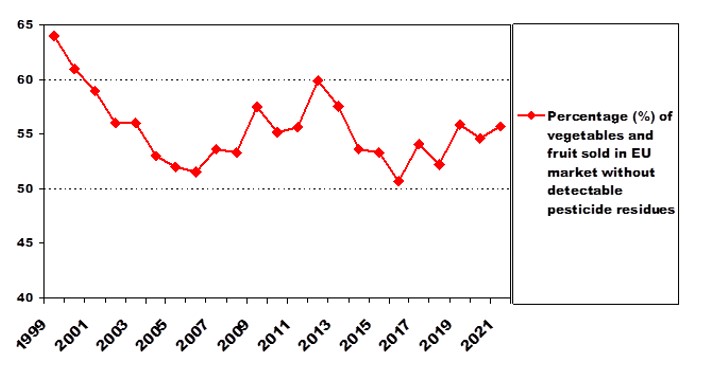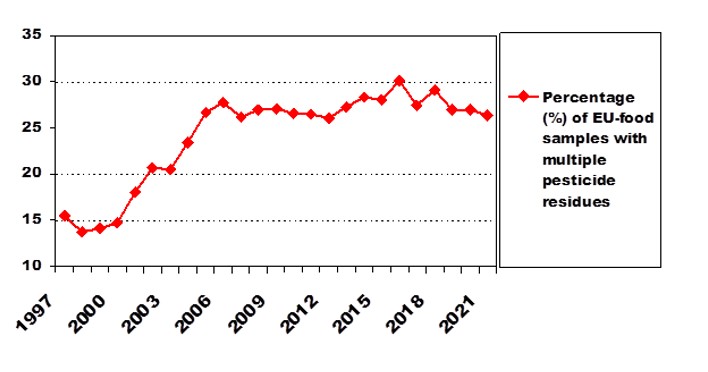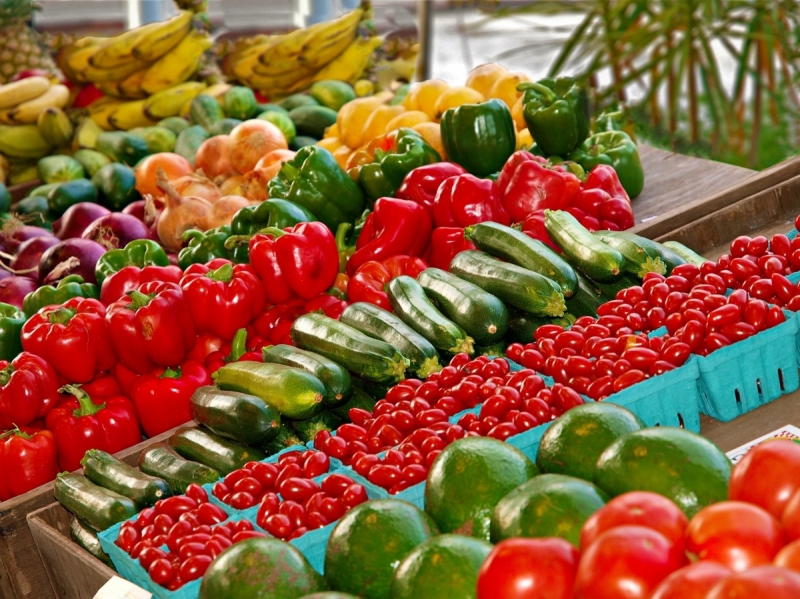On 26th of April 2023, the European Food Safety Authority published its latest annual report on pesticide residues in food sold in 2021 in the EU market across the 27 Member States. EFSA positively announced that in 96.1% of the samples, the pesticide residues fall ‘within legally permitted levels’, however PAN Europe warns this is nothing to applaud for. In fact, out of these samples, only 55.7% were without detectable pesticide residues, whereas 27% of the samples contained pesticide cocktails (two or more residues), the health impact of which remains to be regulated. Therefore contrary to EFSA’s announcement, these results are far from reassuring.
Food with detectable pesticide residues: In 2021 the percentage of vegetables and fruit in European shops without detectable pesticide residues (below analytical detection limit) went slightly up to 55.7 % compared to 54.7% in 2020. Worryingly, close to half of the fruit and vegetables still contain one or more pesticide residues.

Multiple residues in food still remain high, particularly in imports: In 2021 the percentage of multiple residues in fruit and vegetables sold in the EU market was 26.4%, which is very similar to 2019 (27%) and 2020 (27%) and still very high.
Apples, table grapes, strawberries, bananas, grapefruits, oranges, pears, peaches, sweet peppers/bell peppers were the food items with the highest multiple residues quantified.
The highest frequency of multiple residues was found in sweet peppers/bell peppers in a sample from Cambodia where 28 different pesticides were quantified. Next, it was table grapes from Turkey where 19 pesticides were quantified in a simple sample.
In an individual sample of raisins of unknown origin, up to 39 different pesticides were reported.

Consumers unprotected from pesticide mixtures
The EU has, in theory, one of the strictest pesticide legislations in the world. Nevertheless, when it comes to the assessment of pesticides mixtures in food, our policy-makers are turning a blind eye. Although the impact of mixtures of pesticides has been a legal requirement in the EU since 2005, the EFSA is yet to deliver a credible assessment procedure that takes into account mixture effects. All its pilot studies so far are not based on the most recent sensitive toxicity data and include so many assumptions that it is highly questionable whether they can ever be implemented to protect consumers' health. Our policy makers also refuse to apply a “mixtures assessment factor” to account for the potential adverse combined effects of pesticides. Considering that almost 27% of food sold in the EU market contains such pesticide cocktails, the lack of measures to assess the potential harm of these mixtures is unacceptable.
Han Muilerman, Chemicals Coordinator of PAN Europe adds "The lack of action to regulate pesticide cocktails in our food, is why EU citizens are losing their trust to EU decision makers and institutions. It is the responsibility of our Regulators to ensure that food sold in the EU market is truly safe for consumers, including the most vulnerable of our population, such as pregnant women, babies or young children."
Contact: Han Muilerman, Chemicals Coordinator, hans [at] pan-europe.info, +32 2 318 62 55
